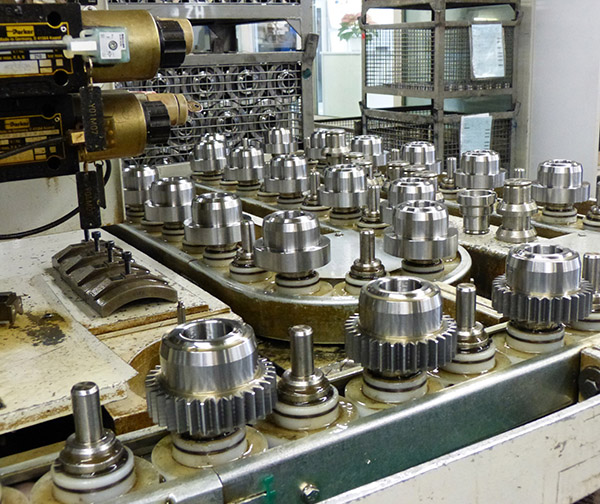Hard work and first-class teamwork between gear manufacturer Hänel and Hainbuch has certainly paid-off. The new Mando G211 mandrel for gear manufacturers is particularly suitable for gear hobbing, cutting and grinding, and this has been demonstrated at Hänel. Now available as a standard mandrel from stock, this solution for gear cutting has optimised the manufacturing process, reduced set-up times and improved gear quality, largely credit to the stable clamping features that dampen vibration.

When a new product like the Mando G211 mandrel is launched, it must be tested thoroughly under real-world conditions. In this case, Hainbuch was looking for a reliable partner capable of testing a prototype, and the company approached Hänel GmbH & Co KG from Bad Friedrichshall, Germany.
Commenting on its willingness to participate, Jürgen Renner, the production manager at Hänel GmbH, says: “We already had positive experiences with Hainbuch clamping devices, so for us, the whole thing sounded promising from the very beginning. We saw the potential for improvements in our manufacturing and processes – that’s why we agreed. I must add, our management is very open to such partnerships and, if it results in rewarding optimisation and keeps investments manageable, nothing stands in the way of such a project.”
Hänel initially received two prototypes of the Mando G211 mandrel in sizes zero and two. The mandrels were tested on a Richardon R400 manual loading machine and a Gleason-Pfauter GP200 hobbing machine with automatic loading to see if they would be compatible.

“For our employees, this new clamping system was very strange, as for 20 years they worked with a clamping system from the machine manufacturer without radial clamping, which worked fine to date,“ admits Renner. “Initially, we had to make some adjustments to the machine and, in addition, we did not reach our zero-line on the Gleasen-Pfauter machine because the mandrel was too tall. As a result, adjustments to the machine and loading system were required. What followed were conversations with the responsible designers at Hainbuch. We have diligently tested and passed on all the information needed to further optimise the mandrel – all design changes were implemented by Hainbuch.”
The revised second prototypes were subsequently made available, undergoing field trials before a few minor adjustments to the machine were made. It was evident that the stiff and slender mandrel could go into series production and be produced for stock.

At Hänel, batch sizes are between 30 and 1000 pieces, which customers specify because of the precision. As a rule, the high-quality gears are hardened and ground, so reworking is not an option.
“With the current clamping system, we couldn‘t achieve good concentricity,” says Renner. “The workpiece was pressed axially downwards. Now it is clamped with the mandrel from the inside, radially outwards. Thus, we have higher clamping stability. This eliminates the reworking of certain components. For some of our orders, the old clamping system was good, because the concentricity was not so important. But basically, the better the concentricity, the easier it works later. With a normal hardened gear, the bore still needs to be reworked, but all the workpieces that are fully geared can now be reduced to one operation.”
Hänel has also improved set-up times with the new mandrel. This time reduction is because when using the Mando G211 mandrel, only the segmented clamping bushing and not the entire clamping system has to be changed. Use of the G211 also eliminates the need for alignment, which of course saves time. Even if the mandrel and segmented clamping bushing have to be changed to a different size, it is still faster. There are only three screws on the mandrel for the support and a screw on the segmented clamping bushing.
“If everything is prepared optimally, and the part family is in stock and can be processed one after the other, we will certainly save 50% of the set-up time,” says Renner. “Not only is the set up faster, but the process is more stable and safer.”
Andreas Hoffmann, head of toolmaking, sees even more benefits: “Thanks to better stability, we can drive higher feed rates. Even tool wear is reduced because we have less vibration.”
Hänel now has six Mando G211 mandrels, the two prototypes and four standard mandrels in sizes zero to four.

Hoffmann explains: “All new components have been manufactured with the mandrel ever since. Even with older components, we try to change over to the mandrel clamping because the segmented clamping bushings from Hainbuch can be delivered within one day. That’s a huge advantage for us.”
“For me, it is incomprehensible that we have not worked with Hainbuch before,” Renner concludes.
For further information www.hainbuch.com















